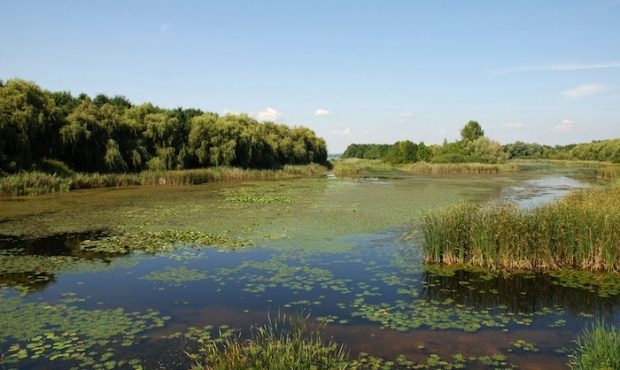In order to remedy the extraction of aggregates in Cervantes, Río Negro, they created an artificial wetland called “El Maca”. The results of the proposal, four years after starting it, were surprising: it served as a refuge for biodiversity and about 120 species of birds appeared.
Hormigonera del Interior SRL (HDI), owned by Eduardo Pili, is dedicated to the extraction, classification, and washing of aggregates for the production of concrete used in construction.
Four years ago, they began to create an artificial wetland to turn it into a site of biodiversity conservation.
They created a wetland in Río Negro: how it was formed
Since 2018, they have been working on a farm within the municipality of the city of Cervantes. By extracting minerals below the water table, the groundwater entered the exploitation pit and a lagoon was formed. Since no toxic substances are used in the extraction process, the water is of high quality.
Since then, a diversity of resident and migratory bird species started to be seen. At that time, they conducted a bird census and survey with photographer Paul González and managed to spot more than 23 species in the area.
 Wetlands play a central role in the conservation of global biodiversity.
Wetlands play a central role in the conservation of global biodiversity.
Artificial wetland: which species inhabit it
Currently, according to records, that number has risen to 120. According to surveys, in the area you can spot yellow-billed pintails, coots, neotropic cormorants, yellow-billed teals, spoonbills, silver teals, and red-fronted coots.
They also saw a Chilean swallow nesting, which was one of the first records in the province. That was last year, and this year they returned, showing that the birds are safe.
The Patagonian wetland project advances with each species recorded. When the waterfowl arrived, so did the hunters such as hawks and falcons.
The team conducting monitoring and tracking is composed of environmental consultant Sebastián Boigues, photographers and naturalists Paul González, Ignacio Hernández, Axel Feuereisen, and Alejandro Carnevale, and bird specialist and naturalist Julián Tocce.
Do you already know our YouTube channel? Subscribe!

